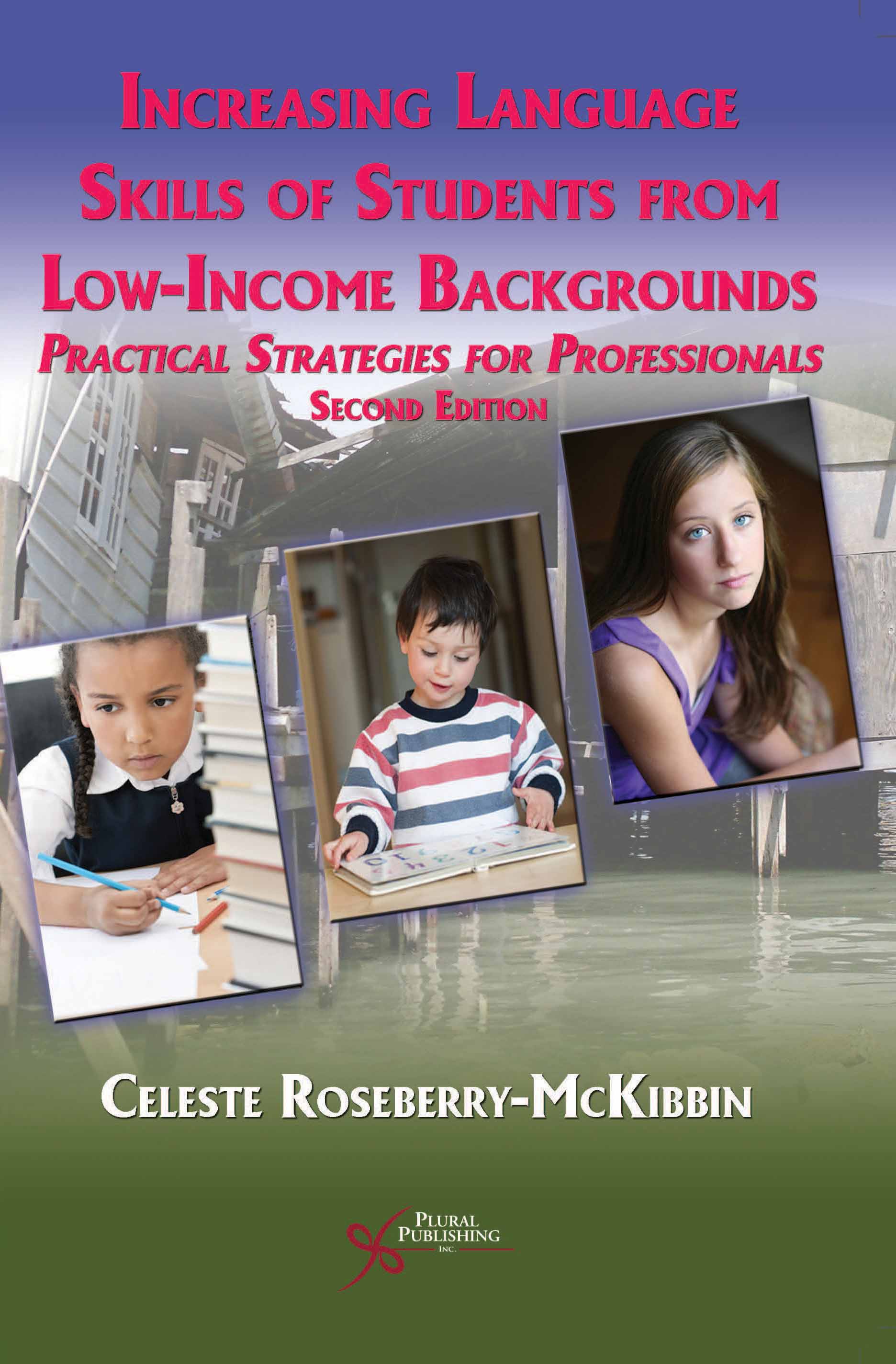
Increasing Language Skills of Students from Low-Income Backgrounds: Practical Strategies for Professionals
Second Edition
Celeste Roseberry-McKibbin
Details: 480 pages, B&W, Softcover, 6" x 9"
ISBN13: 978-1-59756-497-7
© 2013 | Available
For Instructors
Purchase
This book, now in its second edition, is a practical resource that helps speech-language pathologists, educators, and other professionals understand how poverty affects children's developing language and provides strategies that support these children and their families.
The author, a university professor and part-time itinerant speech-language pathologist in the schools, balances research and practical, "Monday morning" strategies for professionals who want to help low-socioeconomic status (SES) students from preschool through high school succeed in school and, eventually, in society.
The text presents up-to-date information about the "culture of poverty" and background information on factors impacting low-income children's language skills. It goes on to provide practical strategies for nonbiased assessment, intervention, structuring the school environment, and working with families.
Helpful new features in the second edition include:
- Chapter highlights at the end of each chapter
- References to many new research studies
- Content grounded in principles of evidence-based practice
- Practice recommendations based in research from a variety of disciplines, such as social science, speech-language pathology, neuroscience, and education
- New case studies of the author's actual clients
The second edition includes much more information about serving homeless students, including mitigating the effects of chaos through increasing executive functioning skills. The author works directly with homeless people on the streets and therefore includes a broad-based (hands-on and research) perspective about meeting the unique needs of this population.
The second edition contains new information about using Response to Intervention (RtI) to serve low-SES students in general education classroom settings. Updated technology recommendations (e.g., using iPad and YouTube technology) are presented. The section on increasing the literacy skills of low-SES students has been expanded, as well.
In sum, the second edition of Increasing Language Skills of Students from Low-Income Backgrounds is a must-have for any professional who serves students and their families from low-SES backgrounds.
Preface
Acknowledgments
1. Introduction to Poverty: Variables Affecting Students' Performance
- Introduction
Definitions and Demographics of Poverty
Physical and Psychological Effects of Poverty- Prenatal and Birth Issues
Hunger and Malnutrition
Overall Brain Development
Basic Safety Issues
Access to Health Care
Environmental Issues
Instability and Chaos
Hearing and Vision
Emotional Atmosphere of the Home
Understanding Children and Families from Backgrounds of Situational and Generational Poverty
- Prenatal and Birth Issues
- Conclusion
Chapter Highlights
2. Language Skills and Behavioral Characteristics in Children of Families of Low Socioeconomic Status
- Introduction
Factors Affecting and Characteristics of Oral Language Skills of Low-SES Children- Overview
The Research of Hart and Risley
Follow-up Research on Hart and Risley: Greenwood and Colleagues
- Overview
- Other Factors Affecting Oral Language Development of Low-SES Children
- Job- and Environment-Related Communication Styles
Parental Attitudes Toward Oral Language Stimulation
- Job- and Environment-Related Communication Styles
- Factors Affecting and Characteristics of Literacy Skills of Low-SES Children
- Material and Psychological Resources
Phonological and Print Awareness Skills
- Material and Psychological Resources
- Behavioral Characteristics of Some Children from Low-SES Homes
Conclusion
Chapter Highlights
3. Considerations in Assessment of the Language Skills of Students from Low-SES Backgrounds
- Introduction
Laws Affecting the Assessment of Children from Low-SES Families for Special Education
Response to Intervention Preliminary Components of the Assessment Process- Screening
The Case History
- Screening
- The Use of Standardized Tests
- General Considerations in Using Standardized Tests with Students from Low-SES Backgrounds
- Formal Test Assumptions
- Sources of Bias in the Use of Standardized Tests with Culturally and ::Linguistically Diverse Students from Low-SES Backgrounds
- Modifying Standardized Tests for Use with Students from Low-SES Backgrounds
- General Considerations in Using Standardized Tests with Students from Low-SES Backgrounds
- Language Samples
- General Considerations
Informal Evaluation of Language Use
- General Considerations
- Other Alternatives to Standardized Assessment
- Legal Considerations
Dynamic Assessment
Portfolio Assessment
Assessment of Information Processing Skills
- Legal Considerations
- Conclusion
Chapter Highlights
4. Practical Strategies for Increasing the Oral Language Skills of Children from Low-SES Families
- Introduction
Stimulating Infant Language Development- General Principles
Using Books with Babies
- General Principles
- Stimulating Language Development in Toddlers and Preschoolers
- The Importance of High-Quality Preschool Experiences
The Importance of Appropriate Training for Early Child Care Providers
- The Importance of High-Quality Preschool Experiences
- Practical Strategies for Increasing the Language Skills of Toddlers and :Preschoolers in Natural Settings
- General Principles of Successful Language Stimulation with Young Children
- Specific Incidental Learning/Milieu Teaching Techniques to Encourage Language :Development
Increasing Vocabulary Skills
Practical Strategies for Teaching Formal Language Register in Naturalistic Settings
Increasing Language Skills in Formal Register- Increasing Grammatical Language Skills in Formal Register
Increasing Pragmatic Language Skills in Formal Register
- Increasing Grammatical Language Skills in Formal Register
- Conclusion
Chapter Highlights
5. Practical Strategies for Increasing the Literacy Skills of Students From Low-SES Backgrounds
- Introduction
Optimizing Book Reading Experiences for Young Children
Increasing Early Preliteracy and Literacy Skills: Evidence-Based Strategies- Basic Principles
Increasing Childrens Phonological Awareness Skills
Increasing Print Awareness Skills
Additional Strategies for Enhancing Early Literacy Skills
- Basic Principles
- Enhancing Literacy Skills in the Elementary Years and Beyond
- Increasing Vocabulary Skills for Reading Success
- Providing Assistance for Students from Low-SES Backgrounds with Other Written :Language Challenges
Conclusions
Chapter Highlights
6. Structuring the School Environment for Optimal Performance of Students from Low-SES Backgrounds
- Introduction
Current School Conditions and Attempts at Reform- Attempts at School Reform
Current Conditions in Low-SES Schools
Teacher Preparation and Developing Professionalism
- Attempts at School Reform
- Integrating Schools by Students' Socioeconomic Status
School Enhancement: Providing Supportive Programs and Relationships for :Students from Low-SES Backgrounds- Parallel Education Systems
All Day Kindergartens
Implementing the Arts
Providing Supplemental Programs
Opportunities for Schools to Connect with Community Resources
- Parallel Education Systems
- Serving Gifted Students From Low-SES Backgrounds
Conclusions
Chapter Highlights
7. Practical Strategies for Enhancing Learning, Motivation, and Self-Esteem in Low-SES Students
- Introduction
Enhancing Learning: Optimizing the Environment
Practical Strategies for Enhancing Whole-Brain Learning- Reducing Stress
Increasing Memory Skills
- Reducing Stress
- Contextualizing Language for Children from Low-SES Backgrounds
- Children from Low-SES Families and Language Learning in School
Increasing Contextual Cues to Enhance Learning
- Children from Low-SES Families and Language Learning in School
- Dealing Constructively with Students from the Culture of Resistance
Enhancing Self-Esteem and Motivation: Providing Appropriate Learning Incentives
Increasing Student Independence and Self-Direction- Basic Principles
Implementing the Equity Game
Emphasizing Effort Over Ability
Utilizing Multiple Intelligences
- Basic Principles
- Conclusions
Chapter Highlights
8. Poverty and Highly Mobile Populations: Mitigating the Impact of High Mobility and Chaos
- Introduction
Chaos: Definition, Characteristics, and Impact on Students- Characteristics and Impact of Disorder
Characteristics and Impact of Turbulence
Chaos: General Impact on American Children
- Characteristics and Impact of Disorder
- High Mobility and Chaos: Specific Impact on Schools and Classrooms
Special Considerations in Serving Migrant Students
Serving Students Who Are Homeless- Introduction and Demographic Data
Specific Characteristics and Needs of Homeless Students and Their Families
Practical Strategies for Supporting Homeless Students and Their Families
- Introduction and Demographic Data
- Increasing Executive Functioning Skills in Highly Mobile Students Impacted by Chaos
Definition and Basic Facts
Practical Strategies for Increasing Executive Functioning Skills of Highly :Mobile Students- General Strategies
Developing a Sense of Structure, Routine, and Time Concepts
Learning Classroom Routines and Scripts
Self-Reflection and Planning: Taking Responsibility for Choices and ::Consequences
- General Strategies
- Conclusions
Chapter Highlights
9. Considerations in Working with Families of Students from Low-SES Backgrounds
- Introduction
Low-SES Families: Cultural and Social Capital
Low-SES, CLD Families: Special Considerations in Service Delivery- Some General Considerations
Providing Services for Students and Families from Immigrant/Refugee ::Backgrounds
Language and Literacy Practices in CLD Families: Facilitating an Optimal ::Language Learning Environment for Children
Facilitating Overall Involvement of CLD Families in Children's Education
- Some General Considerations
- Possible Value Conflicts Between Low-SES Families and Middle-SES Professionals
Facilitating Foundational Support Services for Low-SES Families: Practical :Suggestions- Supporting Low-SES Families in Meeting Basic Needs
Supporting Children from Homes Characterized by Abuse or Neglect
Helping Caregivers Provide a Supportive Home Atmosphere
- Supporting Low-SES Families in Meeting Basic Needs
- Conclusions
Chapter Highlights
10. Some Words of Encouragement
References
Index
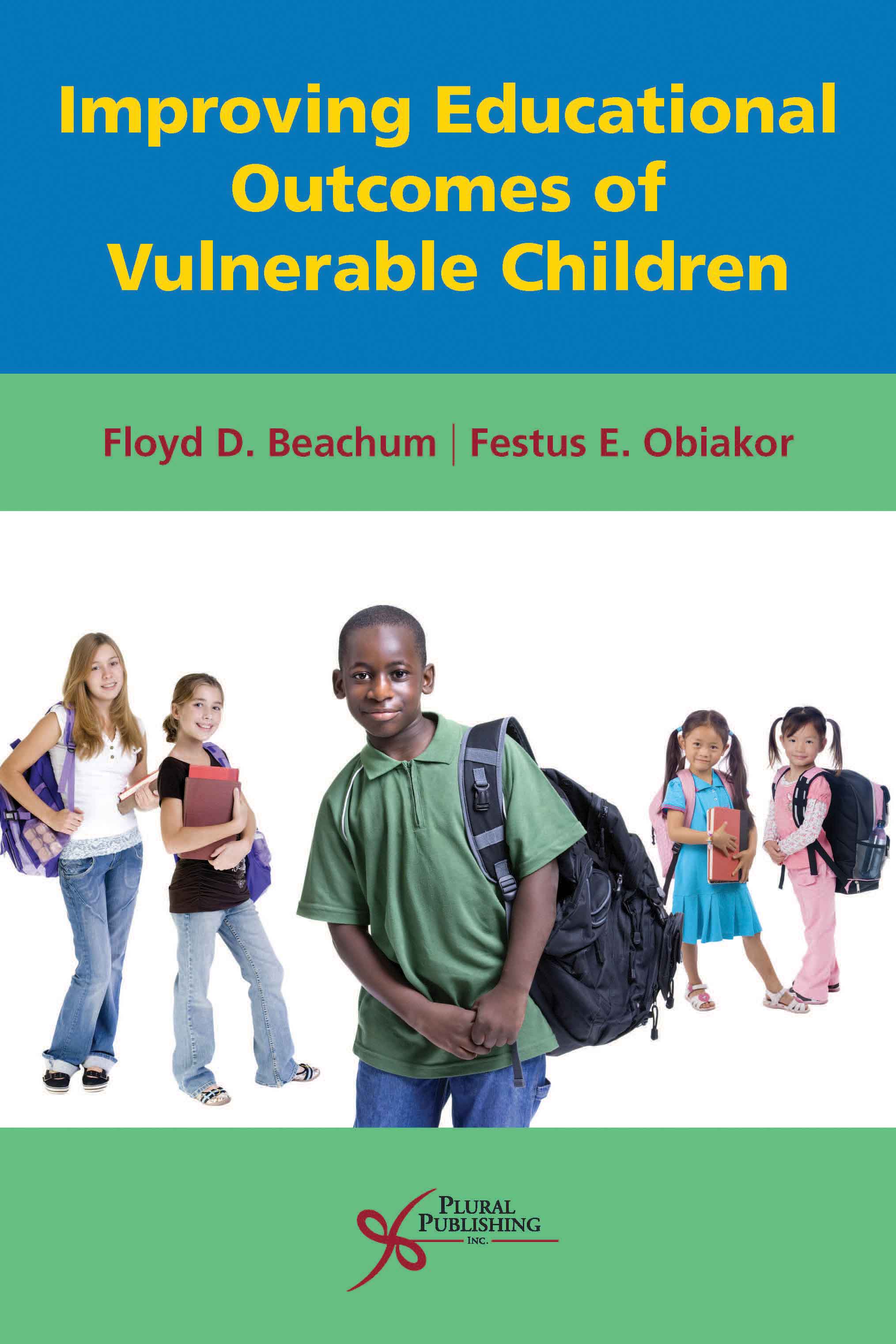
Improving Educational Outcomes of Vulnerable Children
First Edition
Floyd D. Beachum, Festus E. Obiakor
Details: 287 pages, B&W, Softcover, 6" x 9"
ISBN13: 978-1-59756-982-8
© 2018 | Available
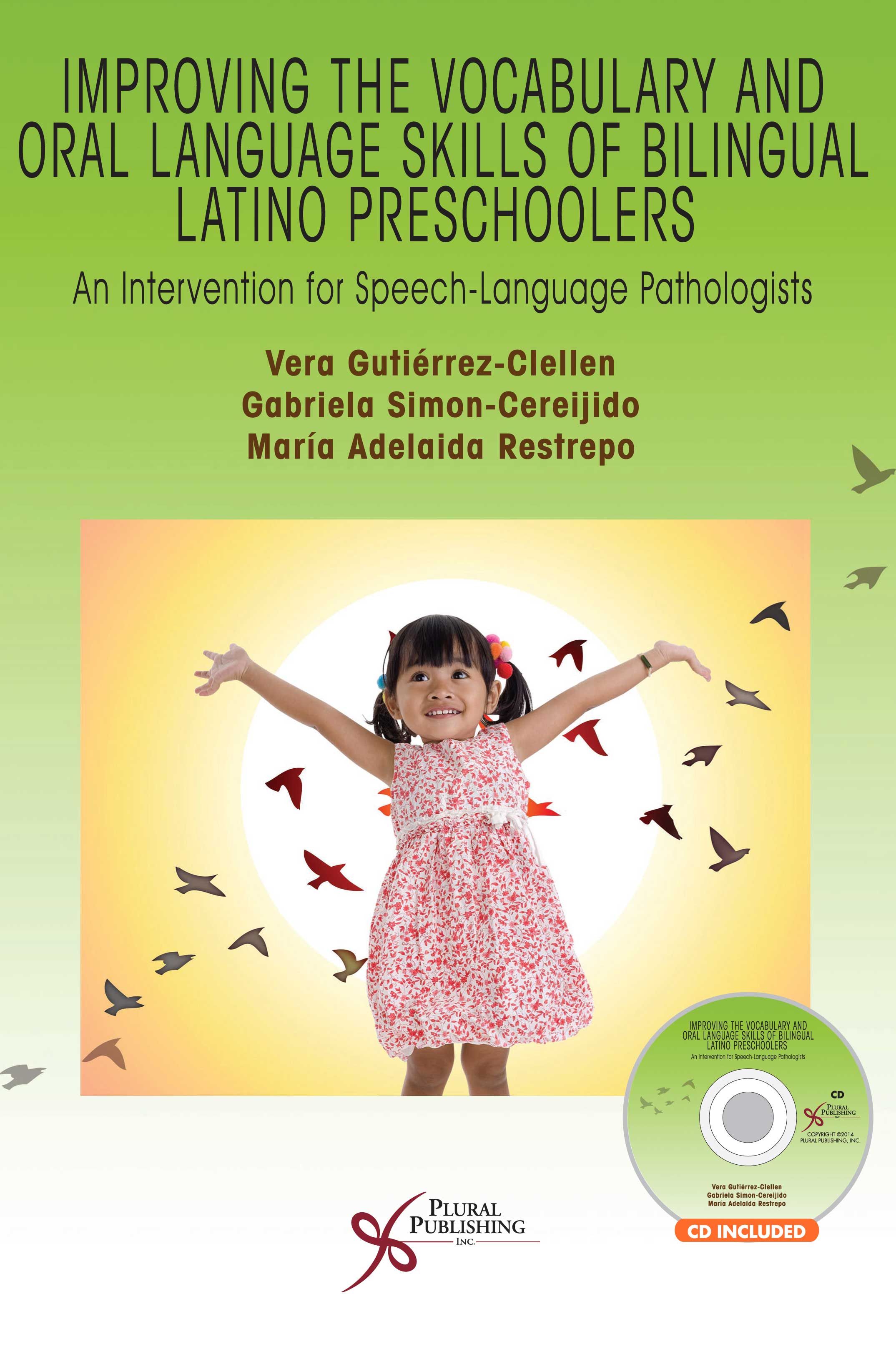
Improving the Vocabulary and Oral Language Skills of Bilingual Latino Preschoolers: An Intervention for Speech-Language Pathologists
First Edition
Vera Gutierrez-Clellen, Gabriela Simon-Cereijido, M. Adelaida Restrepo
Details: 136 pages, B&W, Spiral Bound + CD, 8.5 x 11"
ISBN13: 978-1-59756-519-6
© 2014 | Available
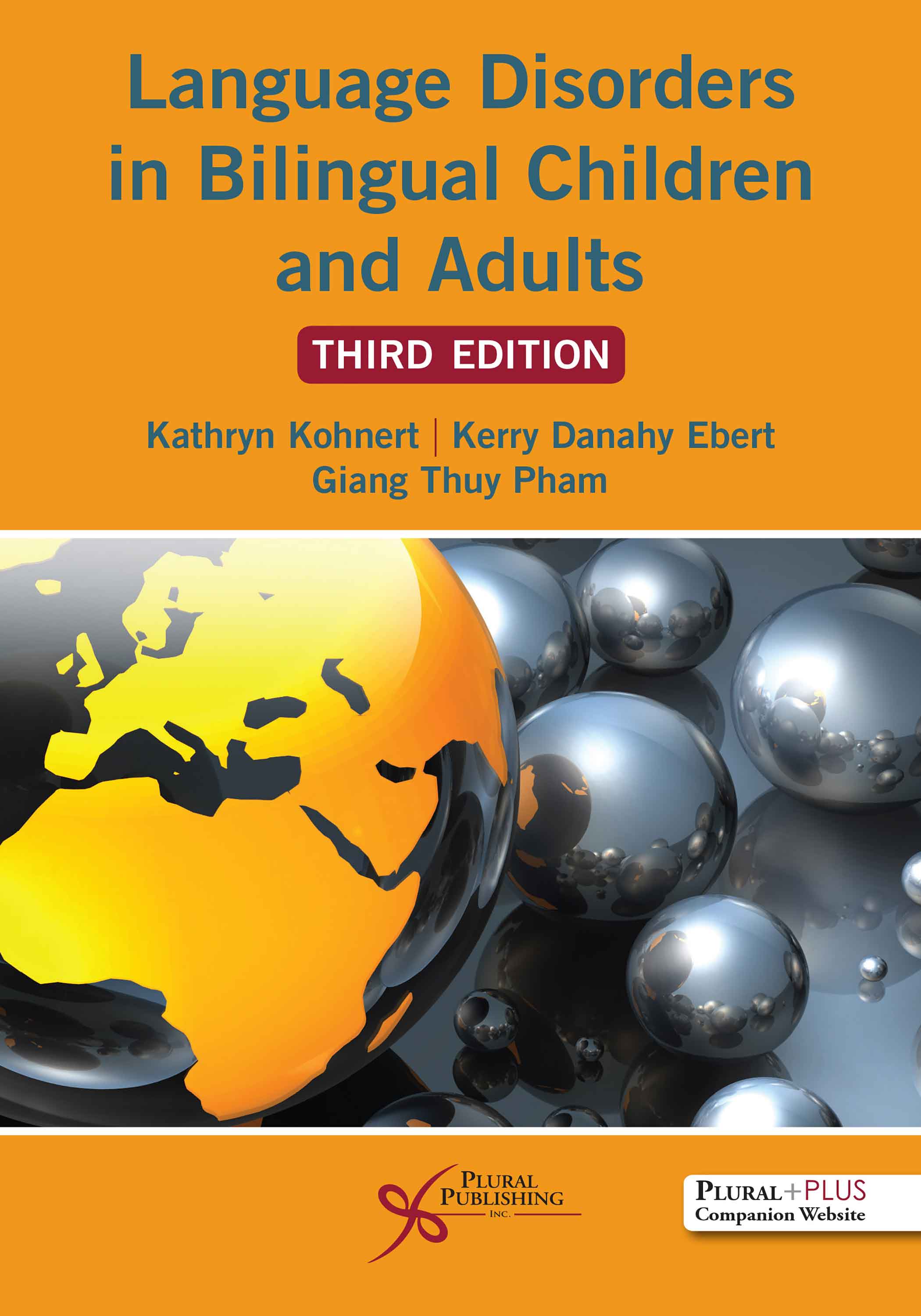
Language Disorders in Bilingual Children and Adults
Third Edition
Kathryn Kohnert, Kerry Danahy Ebert, Giang Thuy Pham
Details: 375 pages, B&W, Softcover, 6" x 9"
ISBN13: 978-1-63550-189-6
© 2022 | Available
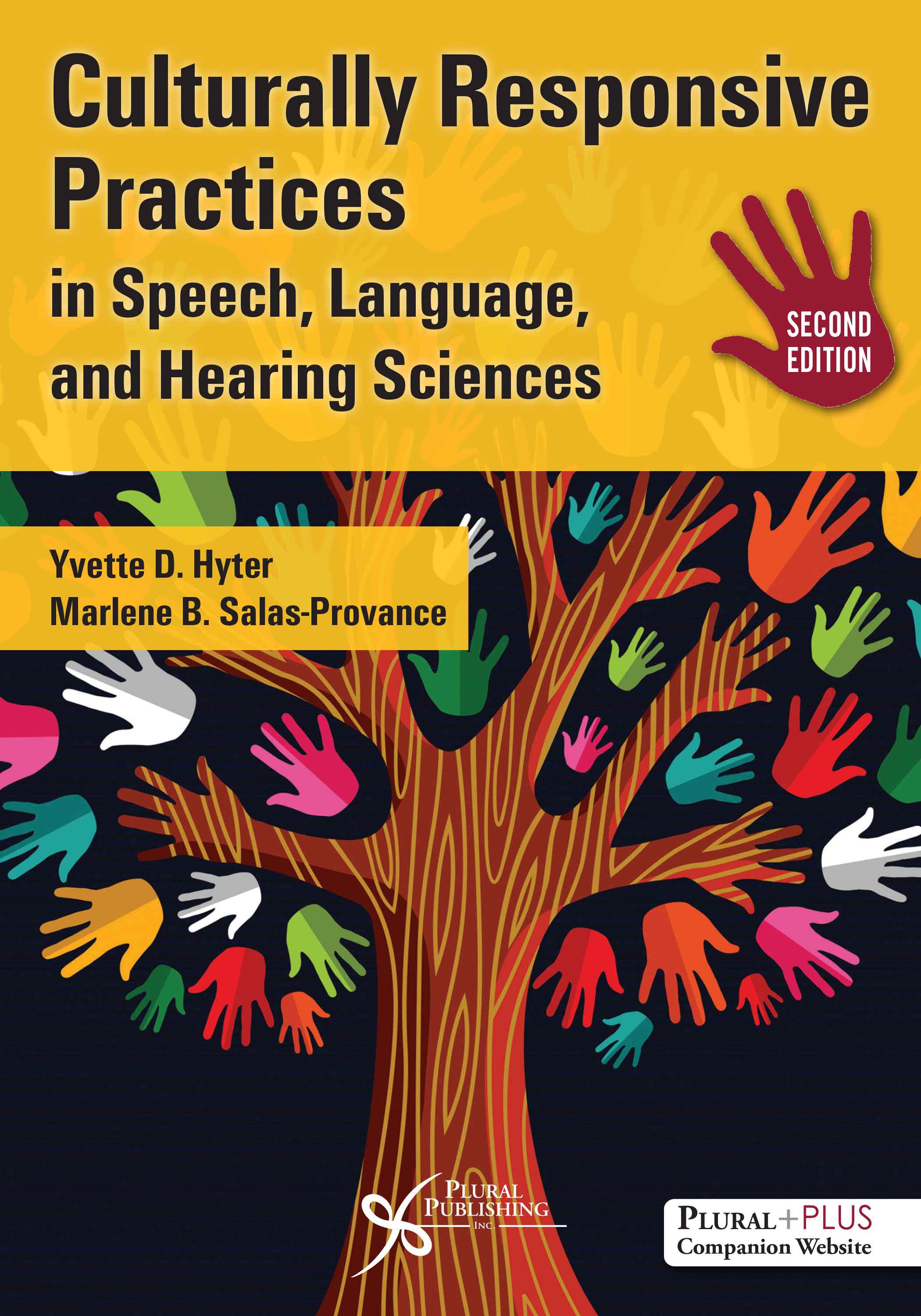
Culturally Responsive Practices in Speech, Language, and Hearing Sciences
Second Edition
Yvette D. Hyter, Marlene B. Salas-Provance
Details: 448 pages, B&W, Softcover, 7" x 10"
ISBN13: 978-1-63550-650-1
© 2023 | Available
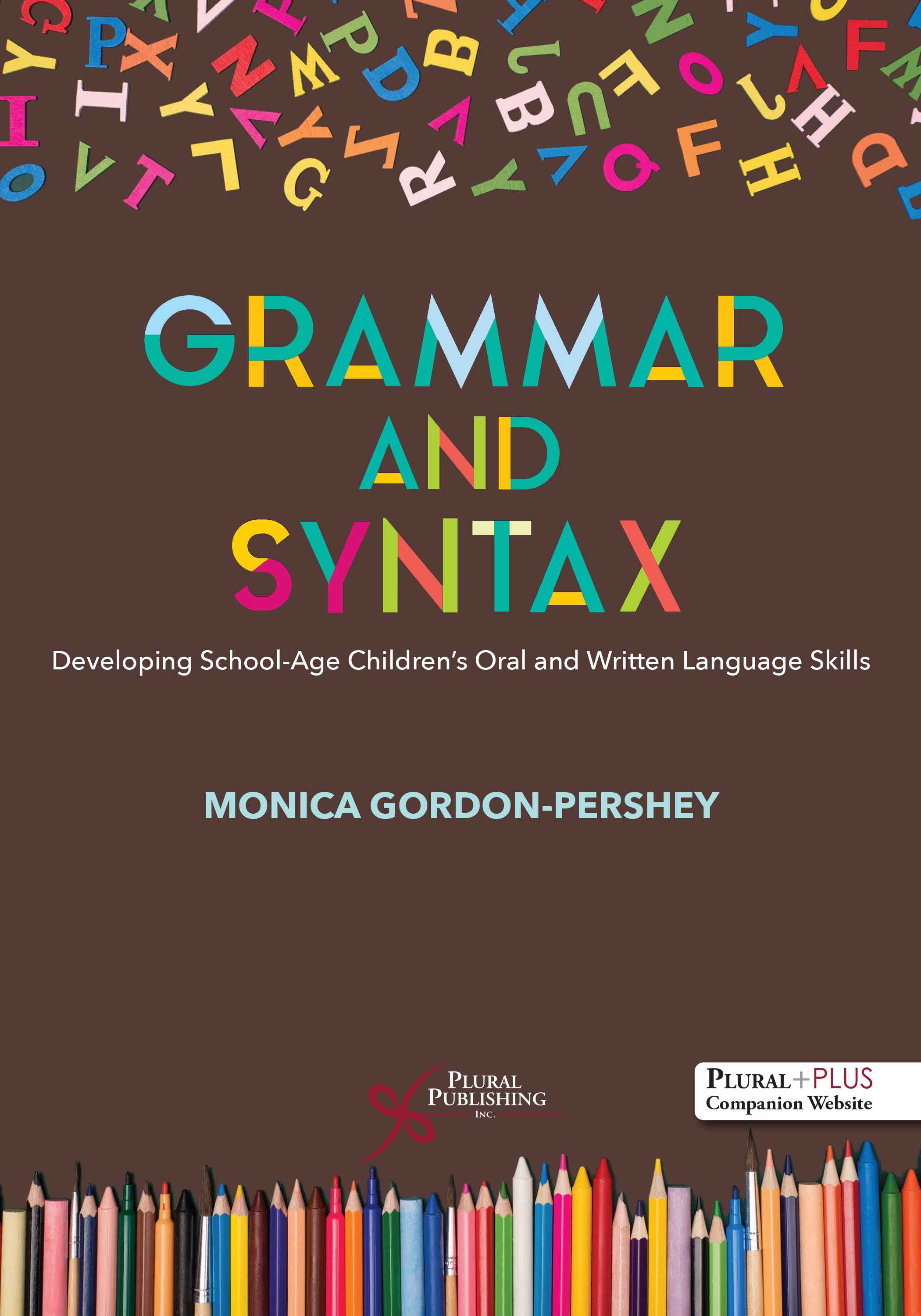
Grammar and Syntax: Developing School-Age Children's Oral and Written Language Skills
First Edition
Monica Gordon-Pershey
Details: 383 pages, B&W, Softcover, 7" x 10"
ISBN13: 978-1-94488-355-3
© 2022 | Available

